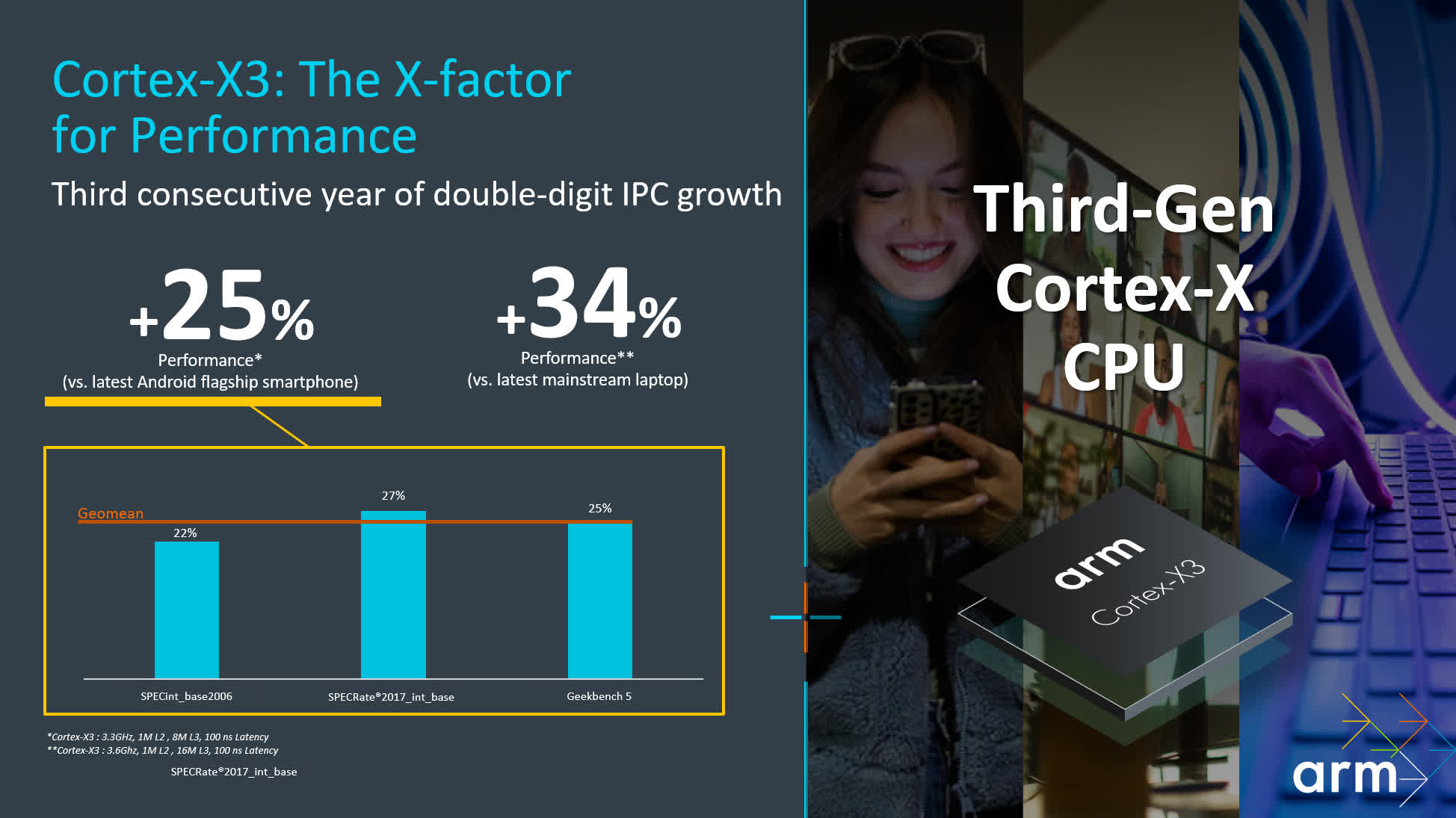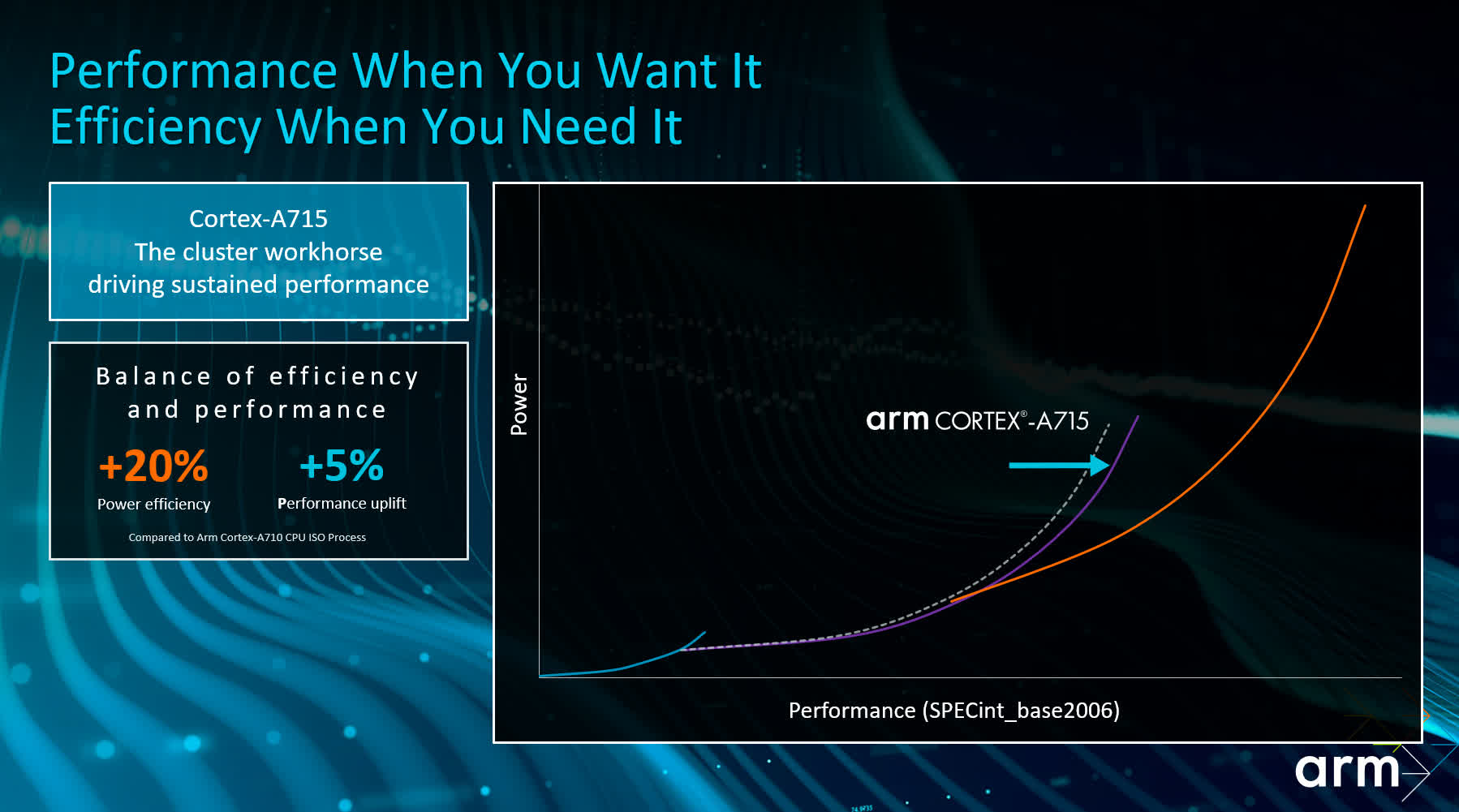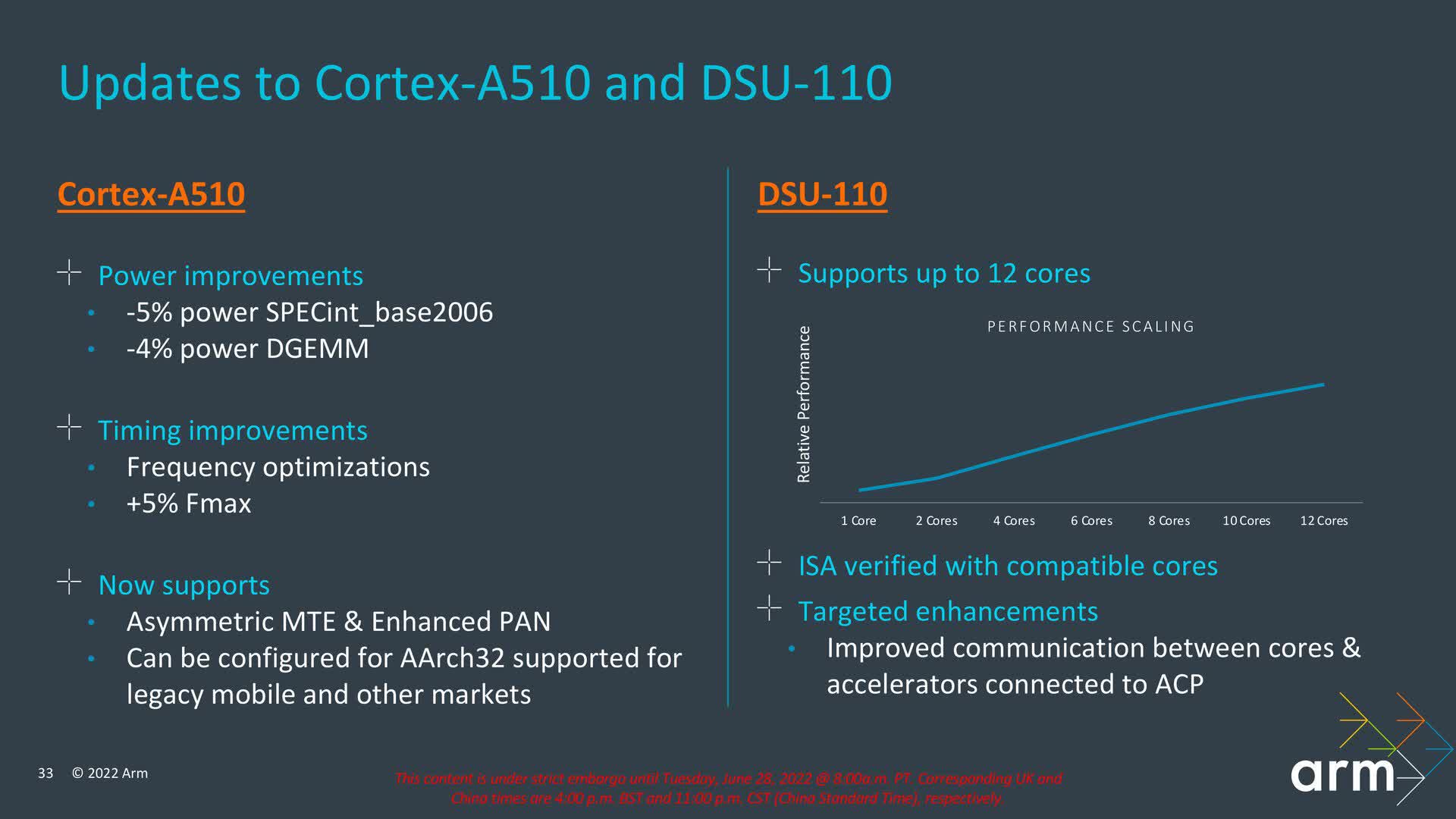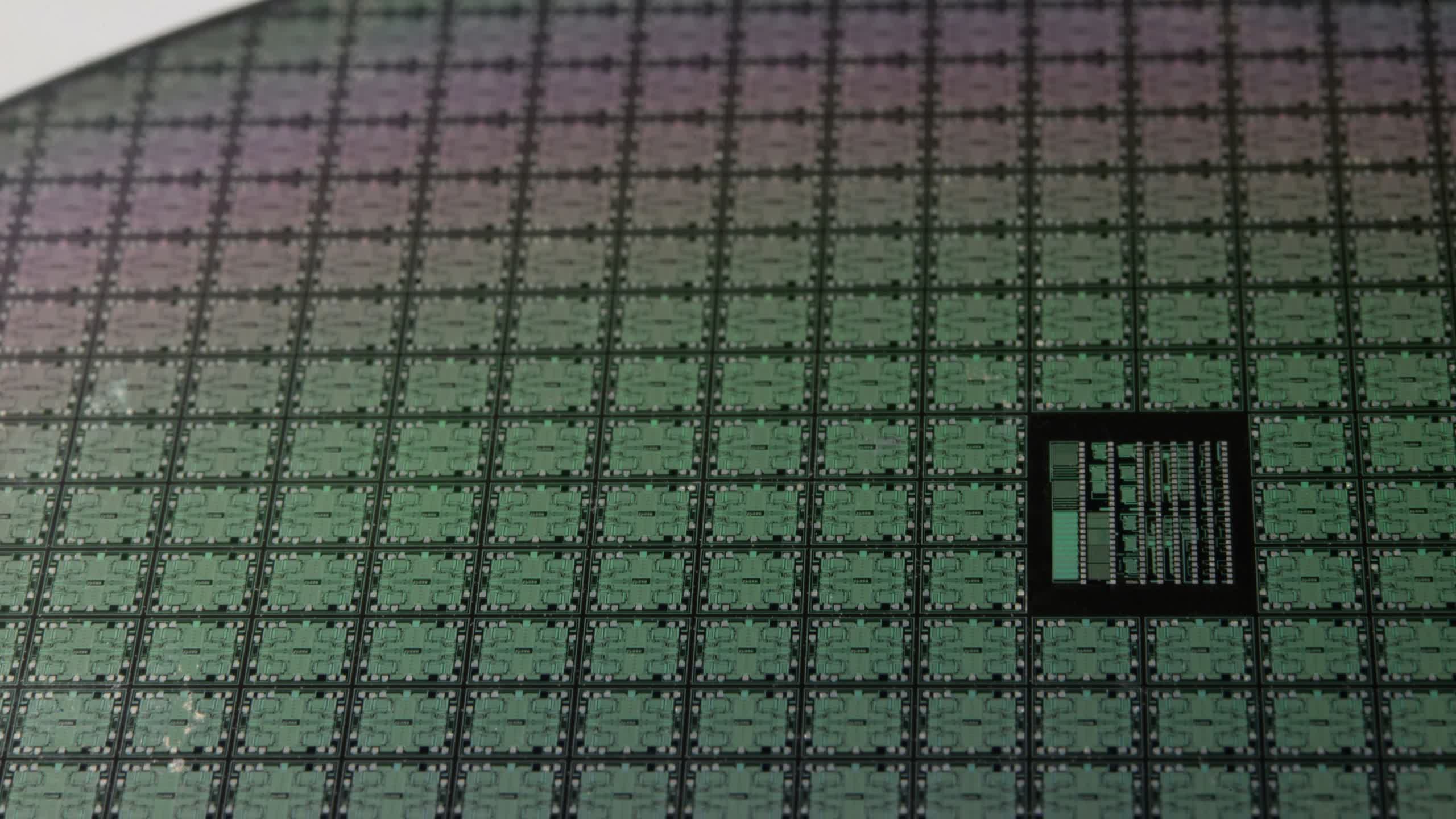In brief: Arm's new Cortex-X3 high-performance core can deliver 25 percent more performance compared to its predecessor when used in a phone and score 34 percent higher than a current-gen mobile Core i7 in single-threaded benchmarks. Meanwhile, the Cortex-A715 focuses more on efficiency improvements, with the Cortex-A510 only getting a minor revamp.
At Arm's Client Tech Day 2022, the company unveiled its next-gen lineup of processor cores that implement the ARMv9-A architecture. Semiconductor companies such as Qualcomm, Samsung, and MediaTek will utilize these designs in their upcoming SoCs intended for smartphones, tablets, laptops, and more.

The Cortex-X3 is Arm's new peak-performance CPU core design, providing an 11 percent uplift in IPC performance compared to last year's Cortex-X2. The company also claims the X3 clocked at 3.3 GHz and coupled with 8 MB of L3 cache can provide 25 percent higher peak performance compared to its predecessor. Raising the clock speed to 3.6 GHz and doubling the cache supposedly allows it to perform 34 percent better than an Intel Core i7-1260P in single-threaded tests.

Moving on to Arm's new performance CPU core, the Cortex-A715 consumes 20 percent less power while providing the same performance as the A710, and it boosts performance by five percent at equal power consumption. The company obtained these metrics by utilizing an identical process node for both CPU designs.

Meanwhile, Arm's "little" Cortex-A510 CPU core got a minor refresh, which confusingly kept the same name. The 2022 version features five percent efficiency improvements using the same node. Interestingly, the new A510 is the only core in today's lineup that still supports AArch32, meaning that 32-bit apps will only run on these efficiency cores.
Arm also announced its new GPU designs at the same event, including the Immortalis-G715, which comes with support for hardware ray tracing.
